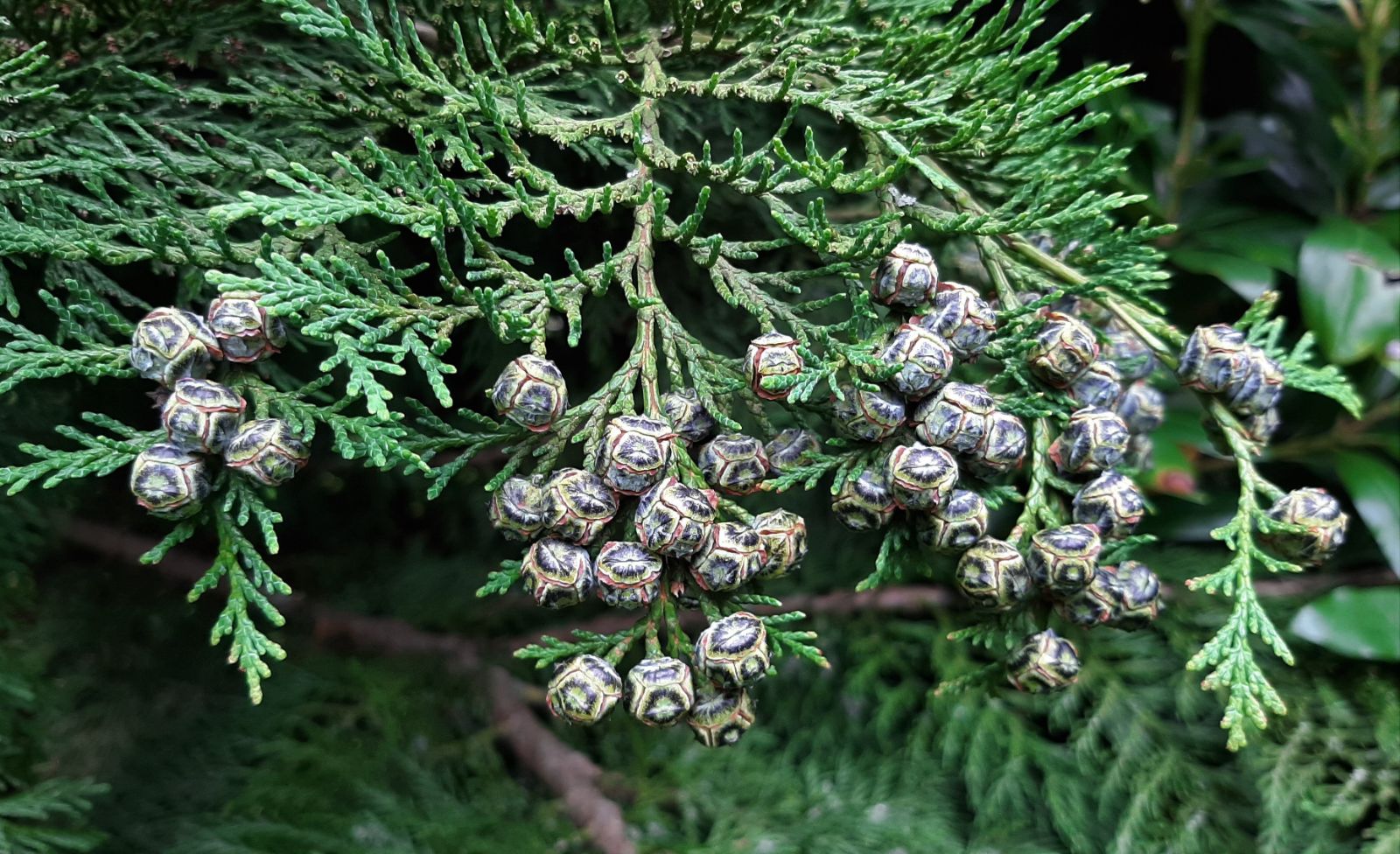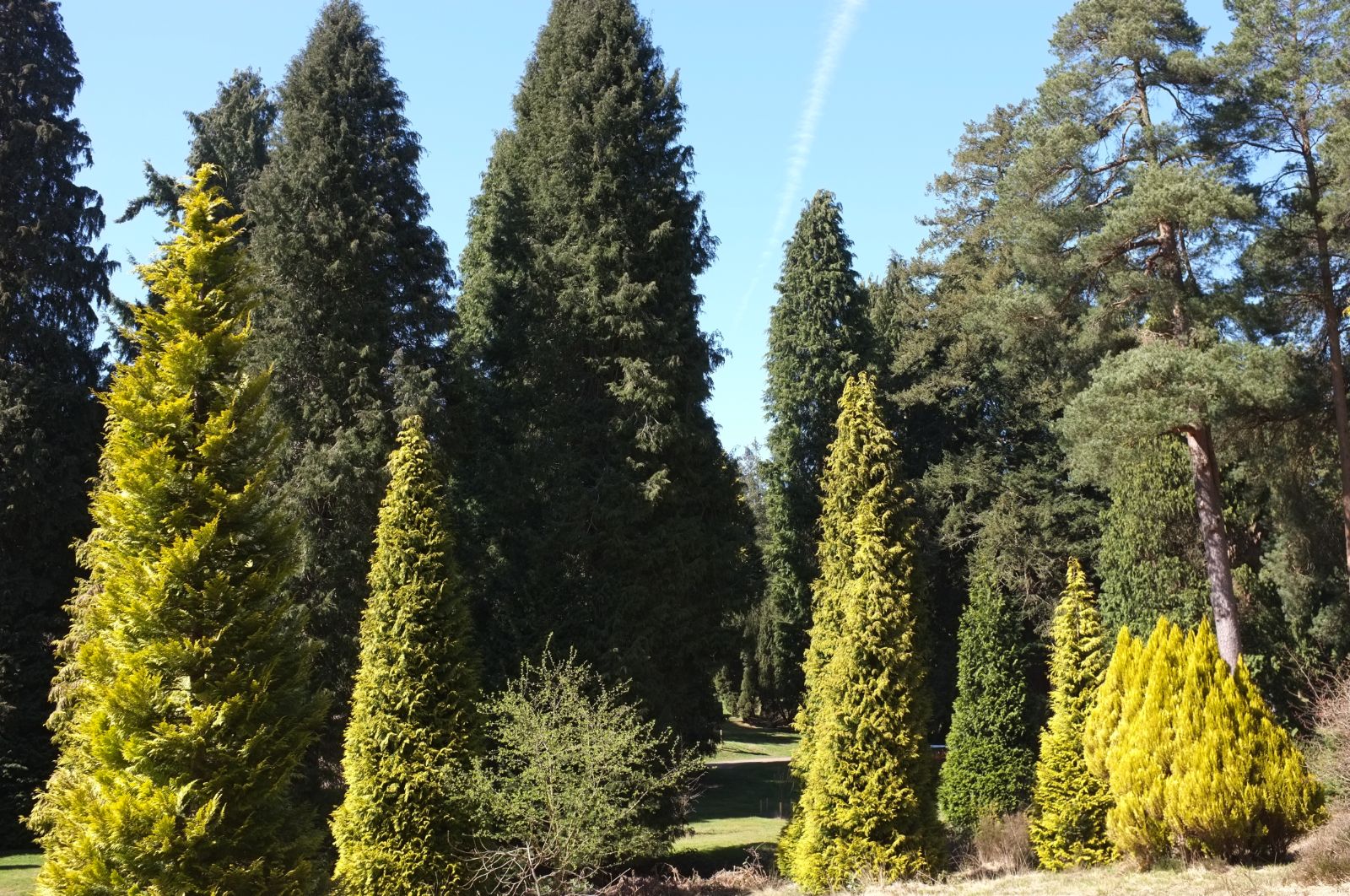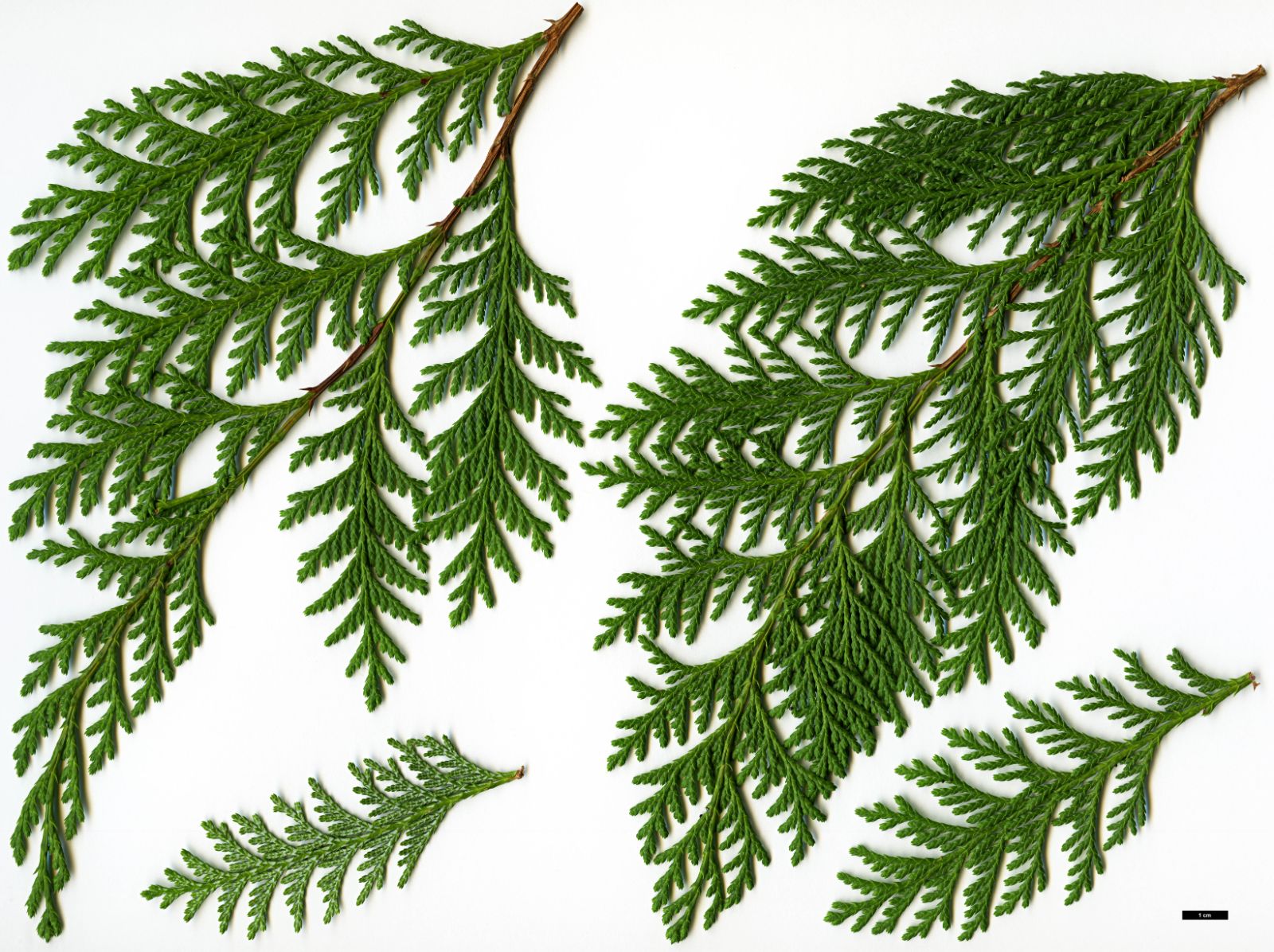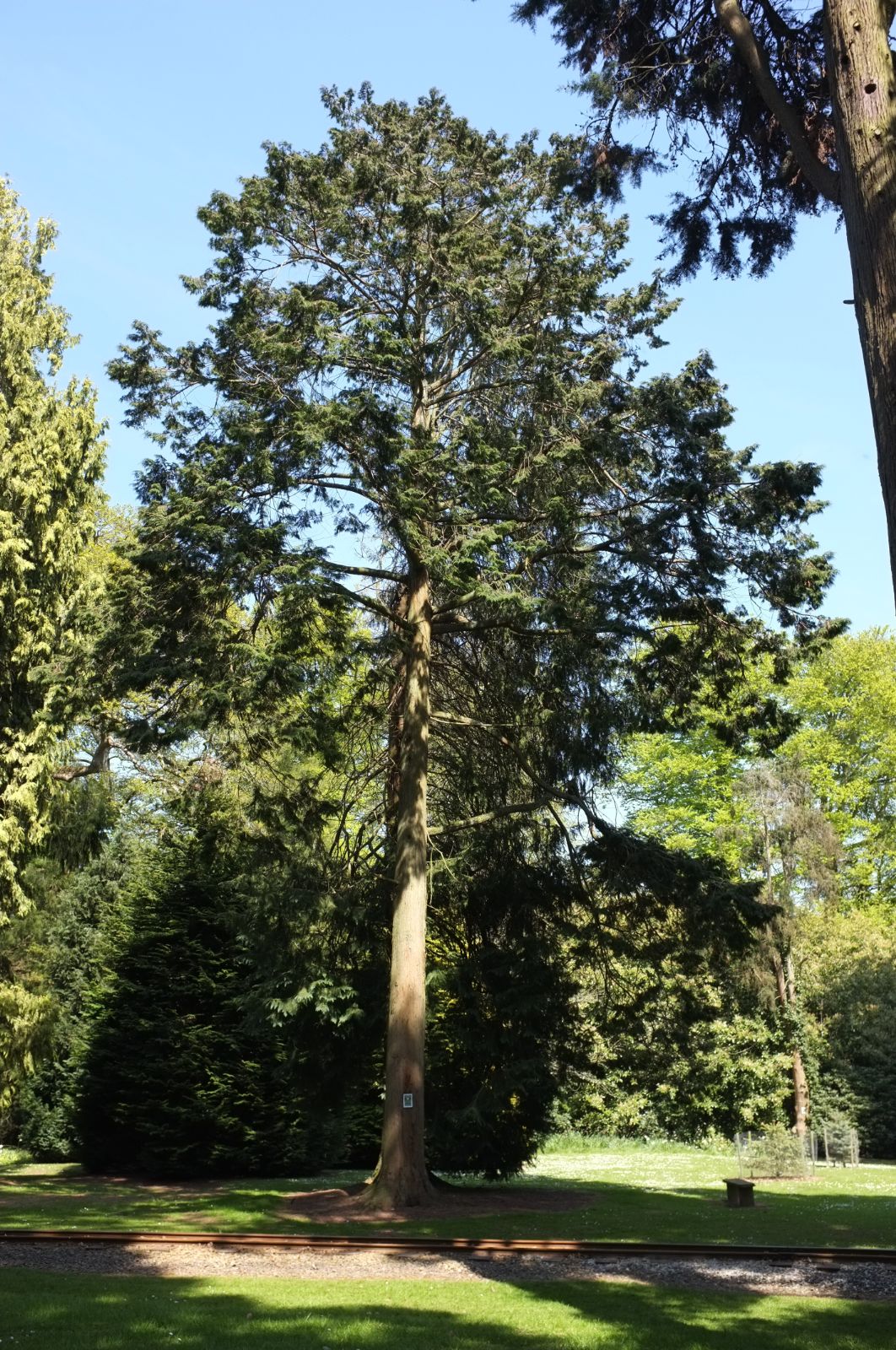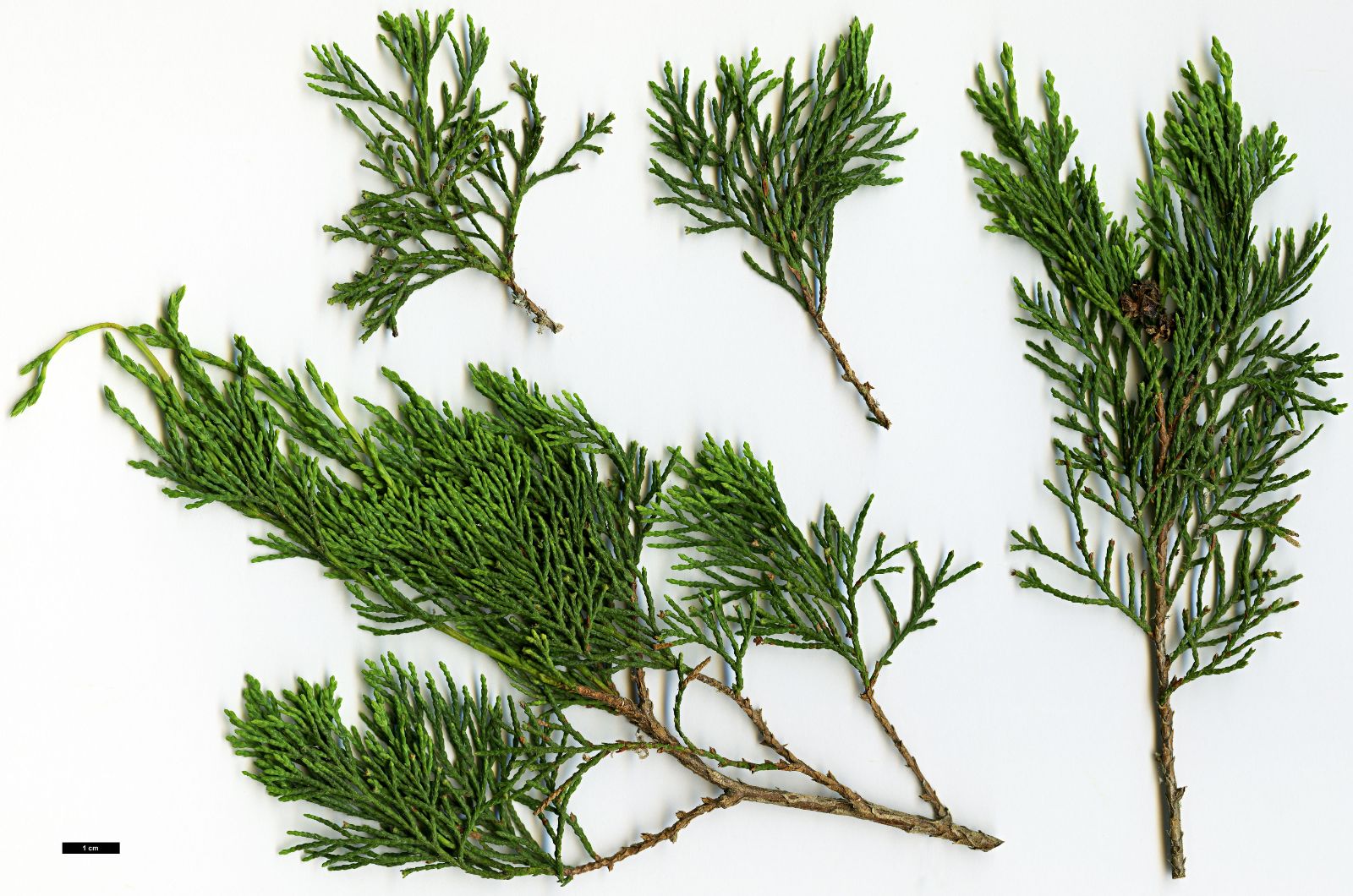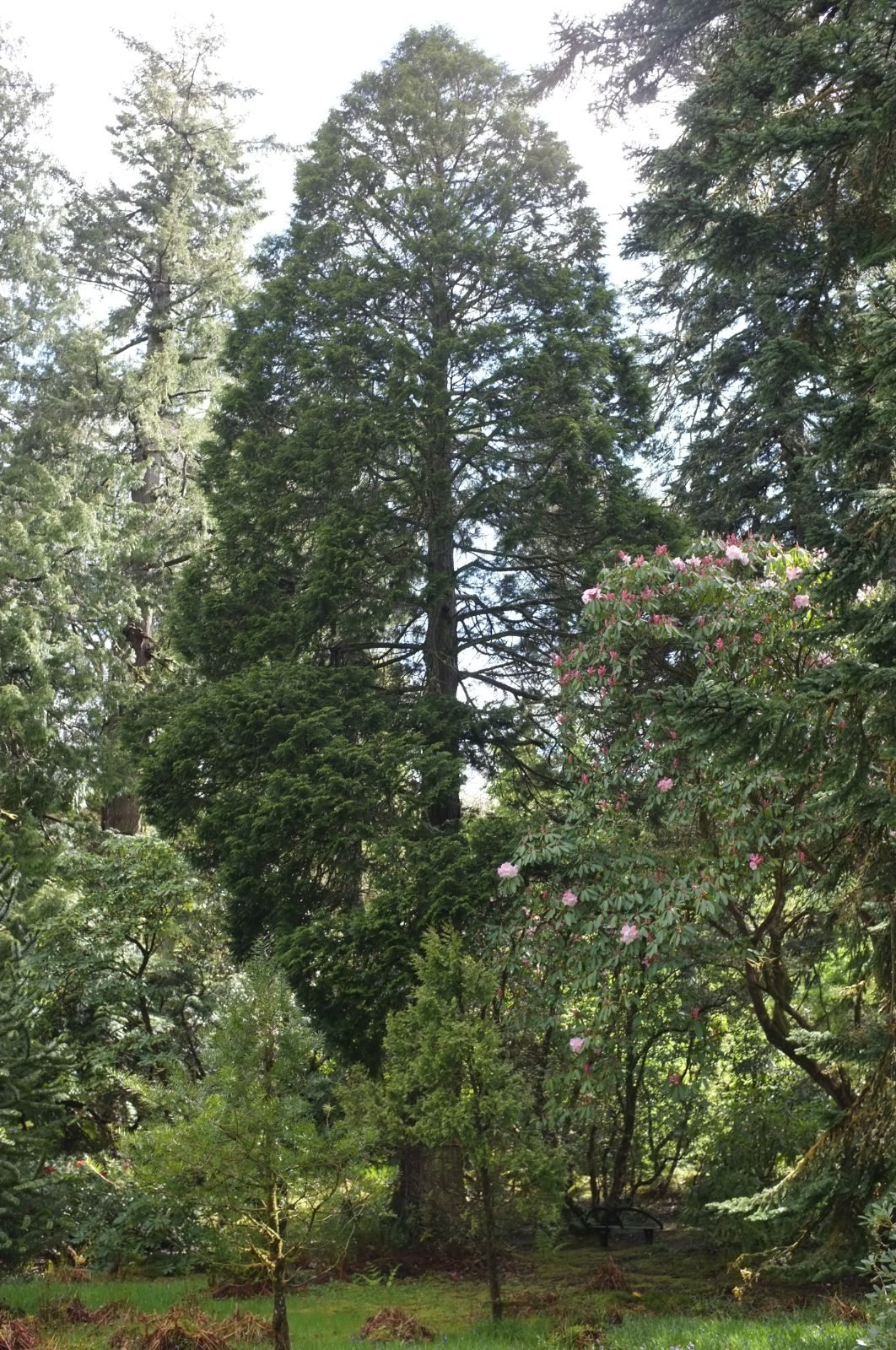Chamaecyparis
Credits
Article from Bean's Trees and Shrubs Hardy in the British Isles
Article from New Trees by John Grimshaw & Ross Bayton
Recommended citation
'Chamaecyparis' from the website Trees and Shrubs Online (treesandshrubsonline.
Family
- Cupressaceae
Common Names
- False Cypresses
- White Cedars
Farjon (2001) recognised six species in the genus Chamaecyparis, though C. nootkatensis has since been transferred into Xanthocyparis (Farjon et al. 2002). Chamaecyparis species are found in North America and eastern Asia. They are generally very large evergreen trees or more rarely shrubs, with a pyramidal shape and spreading branches; the leader shoot is nodding. The bark is smooth, reddish brown, and peels off in strips or scales, although later longitudinal fissures may form. The branchlets are terete to rhombic in cross-section, dorsiventrally flattened, fan-shaped. The leaves are in pairs, scale-like, appressed, decussate, ovate to rhombic, acuminate or obtuse; the lateral leaves are boat-shaped, overlapping the facial leaves, though of similar size. The male strobili are ovoid to oblong, red or yellow, with two to three pairs of microsporophylls. The female cones are solitary, terminal, green or violet to brown, globular, and mature within a year. The seed scales, 8–12 per cone, are decussate, thick and woody, with a small, mucronate umbo. The seeds, borne (one to) two (to five) per scale, are lenticular, with two membranous wings, of equal size. Chamaecyparis and Cupressus are often confused with each other, and some authors advocate placing the former genus in synonymy with the latter. However, DNA evidence suggests that Chamaecyparis is a distinct genus closely related to Fokienia (Gadek et al. 2000, Little et al. 2004). The combination Chamaecyparis hodginsii (Dunn) Rushforth has recently been made (Rushforth 2007).
Chamaecyparis are large, stately conifers with great presence in the landscape, but having a tendency to produce a protean array of mutations of form and foliage colour. Such ‘dwarf’ and ‘coloured’ conifers may be disparaged by horticultural snobs but they frequently have a very valuable place in the garden. It is interesting that the Nootka Cypress – now Xanthocyparis nootkatensis, but formerly placed in Chamaecyparis – does not show this tendency to abundant mutations. The most serious limitation to cultivating the genus is root rot caused by the fungus Phytophthora lateralis, which is affecting the natural population of C. lawsoniana in Oregon and northern California, and cultivated trees throughout western North America. The disease effectively kills the roots, leading to the death of the tree, and is transmitted via water- or soil-borne spores. Long-distance dispersal is assisted by human agency, and then it spreads rapidly downslope. Large areas of the natural distribution of C. lawsoniana are affected, and the fungus has all but eliminated this species from cultivation in western North America (USDA Forest Service 2008). Other species seem not to be affected by the disease, and it is as yet unknown in Europe.
Bean’s Trees and Shrubs
Chamaecyparis
A genus of lofty evergreen trees allied to Cupressus, differing from it in their usually flattened sprays of branchlets, smaller cones usually ripening the first year, and by each cone-scale bearing only two, rarely three to five seeds. All save one – C. thyoides of eastern N. America – are natives of the lands bordering the Pacific Ocean, two in western N. America and the other three in Formosa and Japan. With the exception of C. formosensis all the species are hardy and comprise some of the very finest of ornamental evergreens. They like abundant moisture and a deep loamy soil, and can be increased by cuttings as well as by seeds.
The leaves of seedling and juvenile plants of Chamaecyparis (also of Cupressus and Thuja) are very different from those of adult trees, being needle-like or awl-like, up to 1⁄3 in. long and spreading. Individuals of some species show the remarkable characteristic of retaining this juvenile type of foliage permanently or, at any rate, for an indefinite period, and thereby have originated some very pretty garden trees. The juvenile form of C. pisifera known as ‘Squarrosa’ is so distinct from the type in its foliage that Siebold and Zuccarini (Flora Japonica, 1842) treated it as a distinct species of the genus Retinispora alongside the two wild Japanese cypresses, which also received their first descriptions in that work as Retinispora pisifera and obtusa. Later botanists transferred R. pisifera and obtusa to Cupressus or Chamaecyparis. As for Retinispora squarrosa its true nature was soon revealed through the raising of seedlings and the appearance of occasional reversion shoots with normal adult foliage. But in gardens the generic name, corrupted to “Retinospora”, continued to be used for the juvenile forms.
Some juvenile forms of more recent origin, having produced neither cones nor reversion shoots, still cannot be placed with certainty, either as to species or even to genus (see C. obtusa ‘Sanderi’ and C. thyoides ‘Ericoides’).

